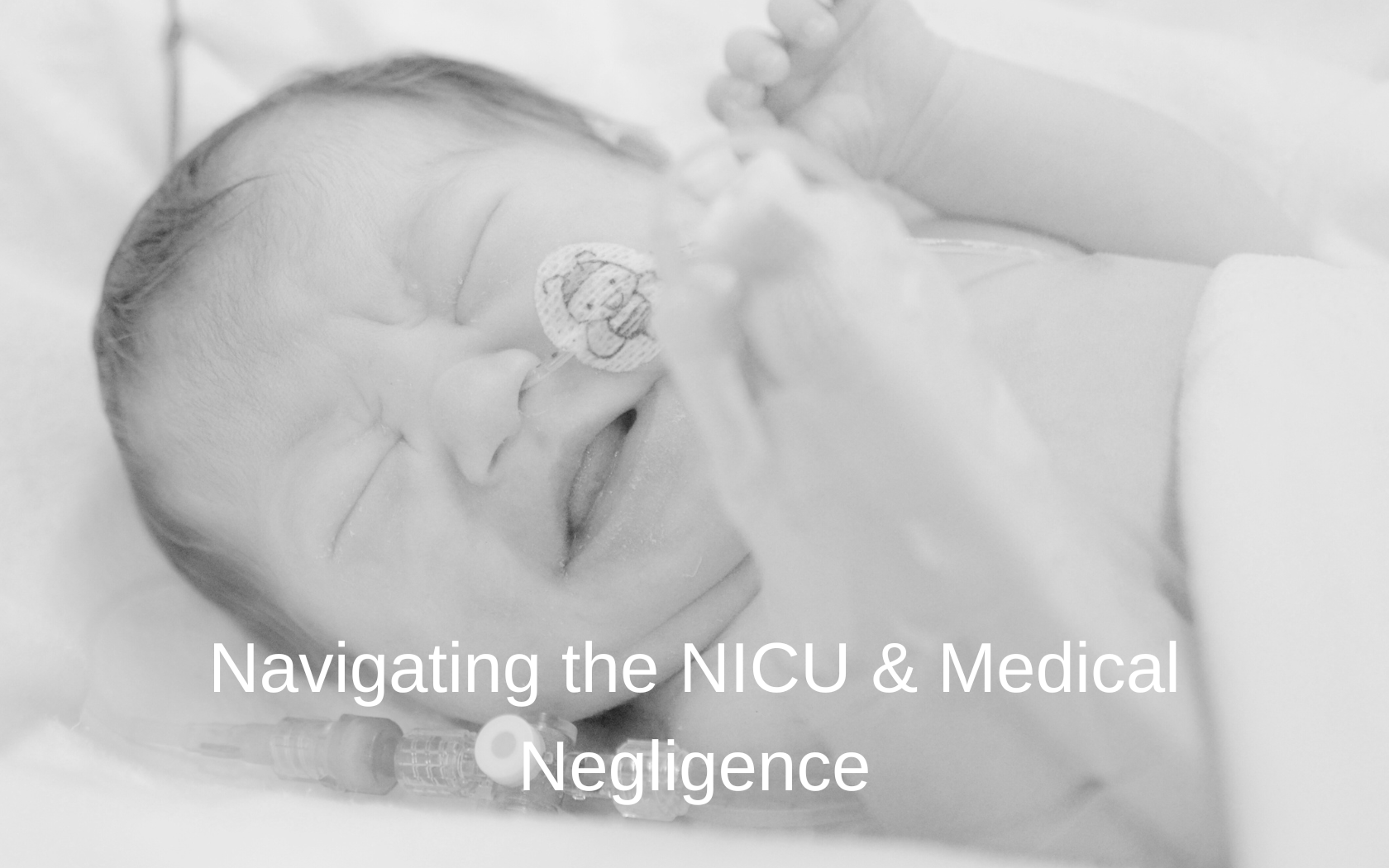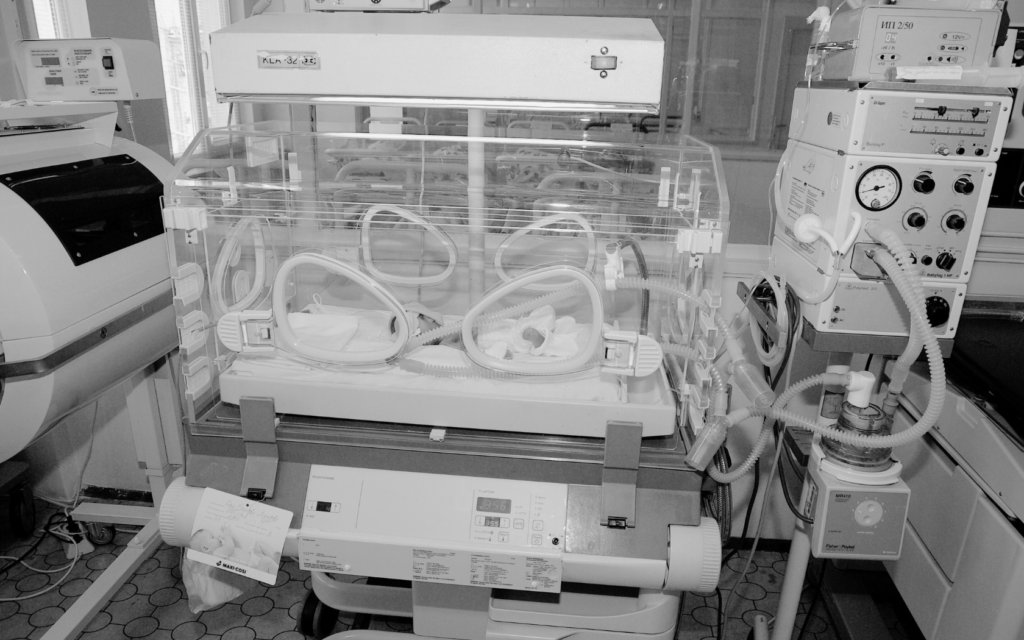When you hear the word “hypothermia”, you might think of dangerously low body temperature. But one type of hypothermia can be helpful: therapeutic hypothermia for newborns. It’s a treatment that can help babies who are born with certain injuries or complications.

What is Hypothermia Therapy for Newborns?
Newborn therapeutic hypothermia cools a baby’s body temperature for a short time. The cooling process is done carefully and gradually. It helps protect the baby’s brain (and other organs) from any possible damage that might have happened during birth.
Also known as cooling therapy, or neonatal cooling, this treatment can help reduce brain damage from hypoxic-ischemic encephalopathy (HIE). It may reduce the chances of long-term health problems and can improve the baby’s overall health.
How Does Cooling Therapy Work?
When a baby’s brain lacks oxygen before or during birth, brain cells can get damaged or even die. Cooling therapy works by slowing down the baby’s metabolic rate. This gives brain cells a chance to recover. It can keep potential brain damage from becoming permanent or getting worse.
Let’s break down the process of cooling neonates step-by-step:
- Doctors place the baby on a cooling blanket or pad. They might put a cooling cap on the baby’s head. This specialized equipment helps lower the baby’s body temperature by a few degrees (usually 33.5 degrees Celsius or 92.3 degrees Fahrenheit).
- The baby stays at a low temperature for 72 hours. Meanwhile, doctors monitor the baby’s vital signs, such as heart rate, breathing, and blood pressure. They will keep a close eye on the baby’s condition to ensure they’re responding well to the treatment.
- After the cooling period, the baby is gradually rewarmed to their normal body temperature. This is called the “rewarming phase”.
- After therapy, the medical team observes the baby for signs of improvement or potential complications. They provide supportive care and continue to monitor the baby’s health.
- Finally, it’s time to assess the therapy’s effectiveness with brain imaging studies and other tests.

Types of Therapeutic Hypothermia for Newborns
There are two main methods for cooling neonates:
- Selective cooling: This method cools only the baby’s head. The baby wears a special cap in which cooled water circulates. This helps lower the temperature of the baby’s brain.
- Whole-body cooling: This method cools the baby’s entire body. The baby lies on a special mattress or blanket that circulates cold water. This can reduce the overall metabolic rate and decrease the production of harmful substances in the body. It can also minimize potential damage to various organs, including the brain.
The method doctors select depends on the baby’s needs, and what equipment the hospital has.
When Should Babies Undergo Cooling Therapy?
Cooling therapy is most effective during the first six hours of life. However, recent research shows it may still benefit infants up to 24 hours after birth.
Reasons for cooling neonates include:
- The baby had a birth complication that deprived them of oxygen
- The baby had severe acidosis (too much acid in the blood)
- An Apgar score of 5 or lower at 10 minutes of life
- The baby experienced prolonged resuscitation
- Abnormal blood gas test result
According to the Academic Medical Center Patient Safety Organization (AMC PSO), if babies meet at least one of the criteria above, plus have seizures or show signs of brain damage, they should undergo cooling therapy. Doctors may also consider therapeutic hypothermia for newborns in other situations not mentioned here. However, there are restrictions based on gestational age and weight.

Cooling Neonates is Standard for Most Cases of HIE
Cooling neonates to treat HIE and other injuries is a fairly new treatment. It became a mainstream therapy method in the early 2000s. But it’s now the standard of care for most babies of 36 weeks gestational age or more who have moderate to severe HIE.
Not applying cooling therapy when a baby needs it can constitute medical malpractice. Let’s take a look at an example. A baby shows signs of brain damage after birth, but the medical team doesn’t run the tests necessary to determine whether or not HIE is present.
A day passes, and the baby still doesn’t have a correct diagnosis. The window for therapeutic hypothermia’s effectiveness has passed, so the child doesn’t receive this treatment. The baby suffers from permanent brain injury and develops cerebral palsy.
Many times, parents are aware something went wrong during birth. But they can’t pinpoint exactly what the error was, and who’s at fault. Birth injury lawyers know the fields of both medicine and law, so they can help you determine whether negligence occurred in your child’s case.
If you suspect a doctor’s error caused your child’s birth injury, contact us and tell us your story. We provide obligation-free consultations at no cost to you.
Neonatal Cooling FAQs
A newborn may need to undergo therapeutic hypothermia or cooling because they were deprived of oxygen during birth. This procedure can lessen potential brain damage by reducing metabolic and biochemical processes. Indications that a newborn might require cooling include low Apgar scores, clinical signs of neurological distress, neonatal seizures, and evidence of brain injury.
In the context of the Neonatal Intensive Care Unit (NICU), “cooling” refers to therapeutic hypothermia. It’s a medical procedure that lowers the body temperature of a newborn who has experienced oxygen deprivation during birth. This is a slow, careful process that’s typically initiated within a few hours after birth.
The protocol for cooling neonates refers to the guidelines medical providers follow when providing therapeutic hypothermia treatment to an infant. It involves several key steps:
– Determining if the baby is an eligible candidate for cooling therapy
– Gradually lowering the baby’s temperature to around 33-34 degrees Celsius (91-93 degrees Fahrenheit).
– Maintaining the baby’s temperature at the targeted level for 72 hours.
– Monitoring the baby’s vital signs during the entire process.
– Returning the baby’s body temperature to normal during the rewarming phase.
– Conducting neurological assessments evaluates how successful the therapy was.
Every medical treatment comes with some amount of risk. However, the risks of newborn cooling are small in comparison to the benefits it can have for a newborn. With that in mind, here are some potential negative side effects of cooling to consider:
– A temporary decrease in heart rate (bradycardia)
– Decrease in blood pressure (hypotension)
– Blood clotting issues
– Increased risk of infection
– Potential reperfusion injury during the re-warming process, where the restoration of blood flow may cause additional damage to tissues.
In general, outcomes are better for injured newborns who receive cooling therapy than those who don’t. One study reported the mortality rate among cooled infants with brain injuries was 28.9%, and 26 out of 90 infants died. In contrast, the mortality rate for infants receiving standard care was 46.4%, with 39 out of 84 infants succumbing to their injuries.




